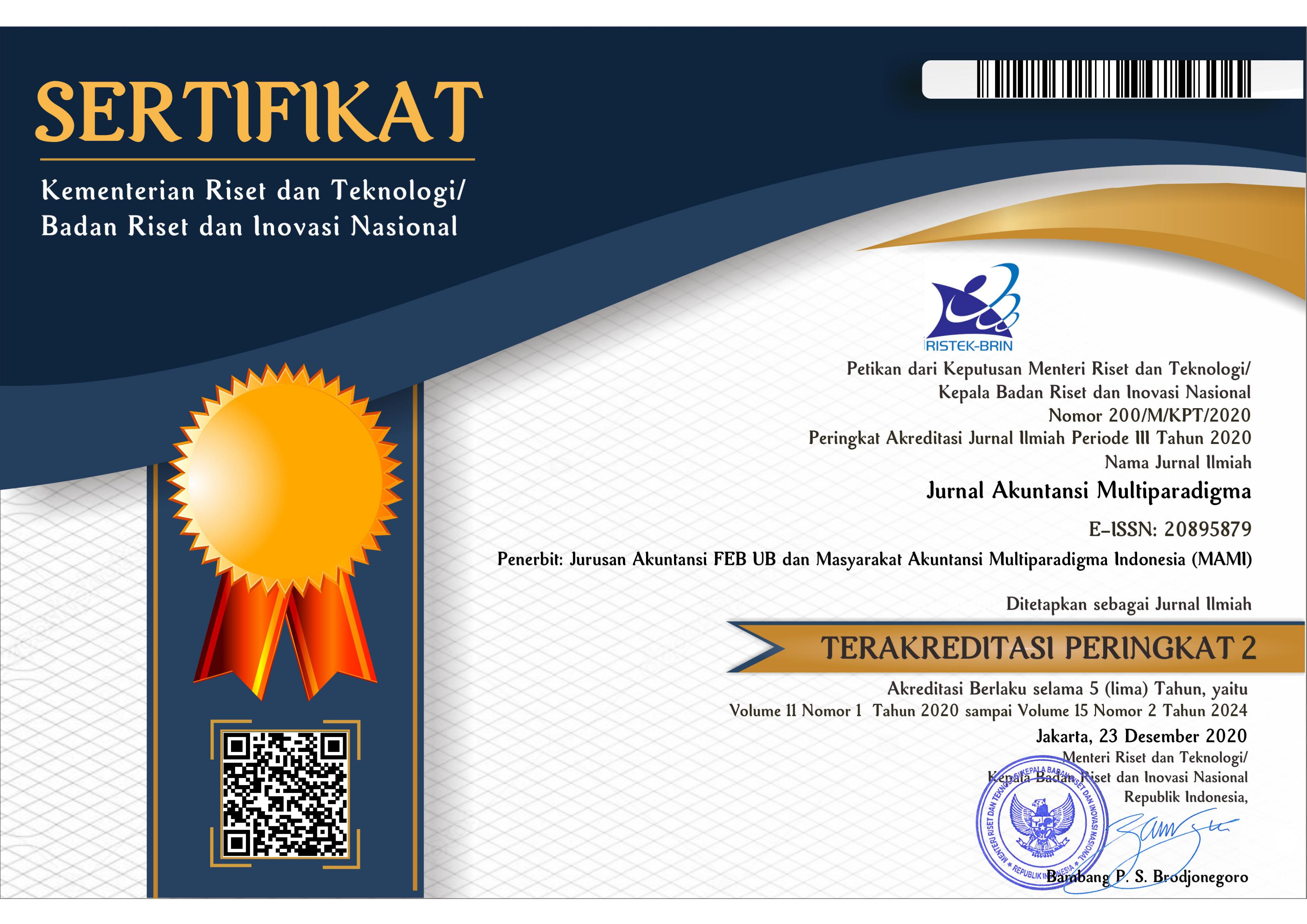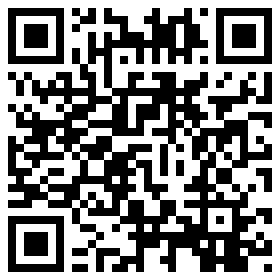KONSEP HARGA JUAL BETAWIAN DALAM BINGKAI SI PITUNG
Abstract
Abstrak: Konsep Harga Jual Betawian dalam Bingkai Si Pitung. Studi ini bertujuan mengungkap konsep harga jual berbasis nilai-nilai Si Pitung yang diimplementasikan oleh masyarakat Betawi. Metode yang digunakan adalah fenomenologi berbasis nilai-nilai Si Pitung. Studi ini menemukan bahwa harga jual yang ditetapkan masyarakat Betawi tidak hanya terbentuk oleh nilai materi, namun juga terkandung nilai religi dalam bentuk sedekah dan nilai sosial. Harga jual tersebut juga merefleksikan profit ubuddiyah dan profit religius. Nilai-nilai Si Pitung mampu membawa pencapaian going concern dari aktivitas ekonomi.
Abstract: The Concept of Betawian Selling Price based on Si Pitung’s Value. This study aims to reveal the concept of selling price based on the values of Si Pitung implemented by Betawi society. The method used is phenomenology based on the values of Si Pitung. This study finds that the selling price set by Betawi society is not only formed by the value of the material, but also contained religious values in the form of alms and social values. The selling price also reflects the profit of ubuddiyah and religious profit. The values of Si Pitung are able to bring the achievement of going concern of the economy activity.
Keywords
Full Text:
PDFReferences
Abdul-Baki, Z., & Uthman, A. B. (2017). Exploring the “Social Failures” of Islamic Banks: A Historical Dialectics Analysis. Journal of Islamic Accounting and Business Research, 8(3), 250-271. https://doi.org/10.1108/JIABR-06-2014-0021
Al-Sowayan, A. I. A. R. (2012). Rahasia Kasih Sayang dalam Islam (Min Ma’aalim al-Rahmah). Jakarta: Yayasan Kemanusiaan Syaikh Tsani Ibn Abdullah.
Aldulaimi, S, H. (2016). Fundamental Islamic Perspective of Work Ethics. Journal of Islamic Accounting and Business Research, 7(1), 59-76. https://doi.org/10.1108/JIABR-02-2014-0006
Al-Krenawi, A. (2016). The Role of the Mosque and Its Relevance to Social Work. International Social Work, 59(3), 359-367. https://doi.org/10.1177/0020872815626997
Almoharby, D. (2011). The Current World Business Meltdown: Islamic Religion as a Regulator. Humanomics, 27(2), 97-108. https://doi.org/10.1108/08288661111135108
Amaliah, T. H. (2016). Nilai Budaya Tri Hita Karana dalam Penetapan Harga Jual. Jurnal Akuntansi Multiparadigma, 7(2), 156-323. http://dx.doi.org/10.18202/jamal.2016.08.7016
Ammar, S. (2017). Enterprise Systems, Business Process Management and UK-management Accounting Practices: Cross-sectional Case Studies. Qualitative Research in Accounting & Management, 14(3), 230-281. http://doi.org/10.1108/QRAM-05-2016-0044
Anwar, C. (2012). Methodological Perspective in Constructing Spirituality and Dignity-based Accounting. Jurnal Akuntansi Multiparadigma, 3(2), 257-273. http://dx.doi.org/10.18202/jamal.2012.08.7160
Attas, S. G. (2017). Seni Pertunjukan Cerita Si Pitung: Pertarungan Identitas dan Representasi Budaya Betawi. Arkhais: Jurnal Ilmu Bahasa dan Sastra Indonesia, 8(1), 68-79. https://doi.org/10.21009/ARKHAIS.081.08
Boyce, G. (2014). Accounting, Ethics and Human Existence: Lightly Unbearable, Heavily Kitsch. Critical Perspectives on Accounting, 25(3), 197-209. https://doi.org/10.1016/j.cpa.2013.10.001
Brown, J., & Jones, M. (2015). Mapping and Exploring the Topography of Contemporary Financial Accounting Research. The British Accounting Review, 47(3), 237-261. https://doi.org/10.1016/j.bar.2014.08.006
Campoy-Muñoz, P., Cardenete, M. A., & Delgado, M. C. (2016). Assessing the Economic Impact of a Cultural Heritage Site Using Social Accounting Matrices: The Case of the Mosque-Cathedral of Cordoba. Tourism Economics, 23(4), 874-881. https://doi.org/10.5367/te.2016.0554
Kamayanti, A. (2016). Metodologi Penelitian Kualitatif Akuntansi: Pengantar Religiositas Keilmuan. Jakarta: Yayasan Rumah Peneleh.
Khairi, M. S. (2013). Memahami Spiritual Capital Organisasi Bisnis Melalui Perspektif Islam. Jurnal Akuntansi Multiparadigma, 4(2), 286-307. http://dx.doi.org/10.18202/jamal.2013.08.7198
Knorr, J. 2014. Creole Identity in Postcolonial Indonesia. New York: Berghahn.
Koentjaraningrat. 2011. Pengantar Antropologi I. Jakarta: Rineka Cipta.
Kusdewanti, A. I., Setiawan, A., Kamayanti, A., & Mulawarman, A. (2014). Akuntansi Bantengan: Perlawanan Akuntansi Indonesia melalui Metafora Bantengan dan Topeng Malang. Jurnal Akuntansi Multiparadigma, 5(1), 149-169. http://dx.doi.org/10.18202/jamal.2014.04.5013
Kusdewanti, A. I., Triyuwono, I., & Djamhuri, A. (2016). Teori Ketundukan: Gugatan terhadap Agency Theory. Jakarta: Yayasan Rumah Peneleh.
Lutfillah, N., Mangoting, Y., Wijaya, R., & Djuharni, D. (2016). Konstruksi Tanggung Jawab Auditor Perspektif Mamayu Hayuning Bawana. Jurnal Akuntansi Multiparadigma, 7(1), 36-50. http://dx.doi.org/10.18202/jamal.2016.04.7003
Mulia, A. (2014). Mengungkap Pemahaman tentang Akuntansi dari Kecerdasan Emosional, Spiritual dan Sosial Mahasiswa. Jurnal Akuntansi Multiparadigma, 3(3), 441-456. http://dx.doi.org/10.18202/jamal.2012.12.7173
Mursy, A. L., & Rosidi. (2013). Sentuhan Rasa di Balik Makna Laba. Jurnal Akuntansi Multiparadigma, 4(2), 165–176. http://dx.doi.org/10.18202/jamal.2013.08.7190
Niswatin, N., Noholo, S., Tuli, H., & Wuryandini, A. (2017). Perilaku Pengusaha Mikro Betawi Perantauan terhadap Cost Reduction. Jurnal Akuntansi Multiparadigma, 8(3), 427-443. doi:http://dx.doi.org/10.18202/jamal.2017.12.7064
Pal, B., Sana, S.S., & Chaudhuri, K. (2012). Multi-item EOQ Model While Demand is Sales Price and Price Break Sensitive. Economic Modelling, 29(6), 2283–2288. https://doi.org/10.1016/j.econmod.2012.06.039
Paranoan, S. (2015). Akuntabilitas dalam Upacara Adat Pemakaman. Jurnal Akuntansi Multiparadigma. 6(2), 214-223. http://dx.doi.org/10.18202/jamal.2015.08.6017
Plassmann, F., & Tideman, T. N. (2011). Marginal Cost Pricing and Eminent Domain. Foundations and Trends in Microeconomics, 7(1), 1-110. http://dx.doi.org/10.1561/0700000050
Rahayu, S., & Yudi. (2015). Uang Nai': Antara Cinta dan Gengsi. Jurnal Akuntansi Multiparadigma, 6(2), 224-236. http://dx.doi.org/10.18202/jamal.2015.08.6016
Rahayu, S., Yudi, & Sari, D.P. (2016). Makna Biaya Pada Ritual Ngaturang Canang Masyarakat Bali. Jurnal Akuntansi Multiparadigma, 7(3), 382-398. http://dx.doi.org/10.18202/jamal.2016.12.7028
Reusen, E., & Stouthuysen, K. (2017). Misaligned Control: The Role of Management Control System Imitation in Supply Chains. Accounting, Organizations and Society, 61, 22-35. https://doi.org/10.1016/j.aos.2017.08.001
Reza, M.A. (2013). 108 Cerita Rakyat Terbaik Asli Nusantara (Cerita Kepahlawanan, Mitos, Legenda, Dongeng & Fabel dari 33 Provinsi). Jakarta: Transmedia Pustaka.
Sadr, S. K. (2015). The Role of Human Capital in Economic Development of the Earliest Islamic Period. International Journal of Islamic and Middle Eastern Finance and Management, 8(4), 398-417. https://doi.org/10.1108/IMEFM-12-2014-0122
Shallehuddin, B. (2016). Spritual Capital: Rahasia Sukses Raih Rezeki Berkah Melimpah. Jakarta: PT Gramedia Pustaka Utama.
Sitorus, J. H. E., Triyuwono, I., & Kamayanti, A. (2017). Homo Economicus vis a vis Homo Pancasilaus: A Fight against Positive Accounting Theory. Pertanika Journal of Social Science and Humanities, 25(S), 311-320.
Spencer, D. (2016). Work in and Beyond the Second Machine Age: The Politics of Production and Digital Technologies. Work, Employment and Society, 31(1), 142-152. https://doi.org/10.1177/0950017016645716
Stanley, C. (2017). Strategic Cost Management and Performance: The Case of Environmental Costs. Social and Environmental Accountability Journal, 37(2), 150-151. https://doi.org/10.1080/0969160X.2017.1345812
Triyuwono, I. (2012). Akuntansi Syariah: Perspektif, Metodologi, dan Teori. Jakarta: Raja Grafindo Press.
Triyuwono, I. (2016). Tri Hita Karana, Tri Kaya Parisudha, dan Rwa Bhineda: Memantik Kesadaran Aham Brahmasmi pada Informasi akuntansi. In Temu Masyarakat Akuntansi Multiparadigma Indonesia. Denpasar.
Tumirin & Abdurahim, A. (2015). Makna Biaya Dalam Upacara Rambu Solo. Jurnal Akuntansi Multiparadigma, 6(2), 175–184. http://dx.doi.org/10.18202/jamal.2015.08.6014
Umney, C. (2017). Moral Economy, Intermediaries, and Intensified Competition in the Labour Market for Function Musicians. Work, Employment and Society, 31(5), 834-850. https://doi.org/10.1177/0950017017692510
Warwick, F., & Robert, W. (2014). The Religious Imperative of Cost Accounting in the Early Industrial Revolution. Accounting, Auditing & Accountability Journal, 27(2), 357-381. https://doi.org/10.1108/AAAJ-03-2013-1269
Windarsih, A. (2013). Memahami “Betawi” dalam Konteks Cagar Budaya Condet dan Setu Babakan. Jurnal Masyarakat dan Budaya, 15(1), 178-200. http://dx.doi.org/10.14203/jmb.v15i1.146
Yunus, R. (2013). Transformasi Nilai-Nilai Budaya Lokal sebagai Upaya Pembangunan Karakter Bangsa (Studi Kasus Budaya Huyula di Kota Gorontalo. Jurnal Penelitian Pendidikan, 14(1), 65-77.
DOI: http://dx.doi.org/10.18202/jamal.2018.04.9002
Refbacks
- There are currently no refbacks.
Copyright (c) 2018 Tri Handayani Amaliah, Sugianto

This work is licensed under a Creative Commons Attribution-NonCommercial 4.0 International License.

















